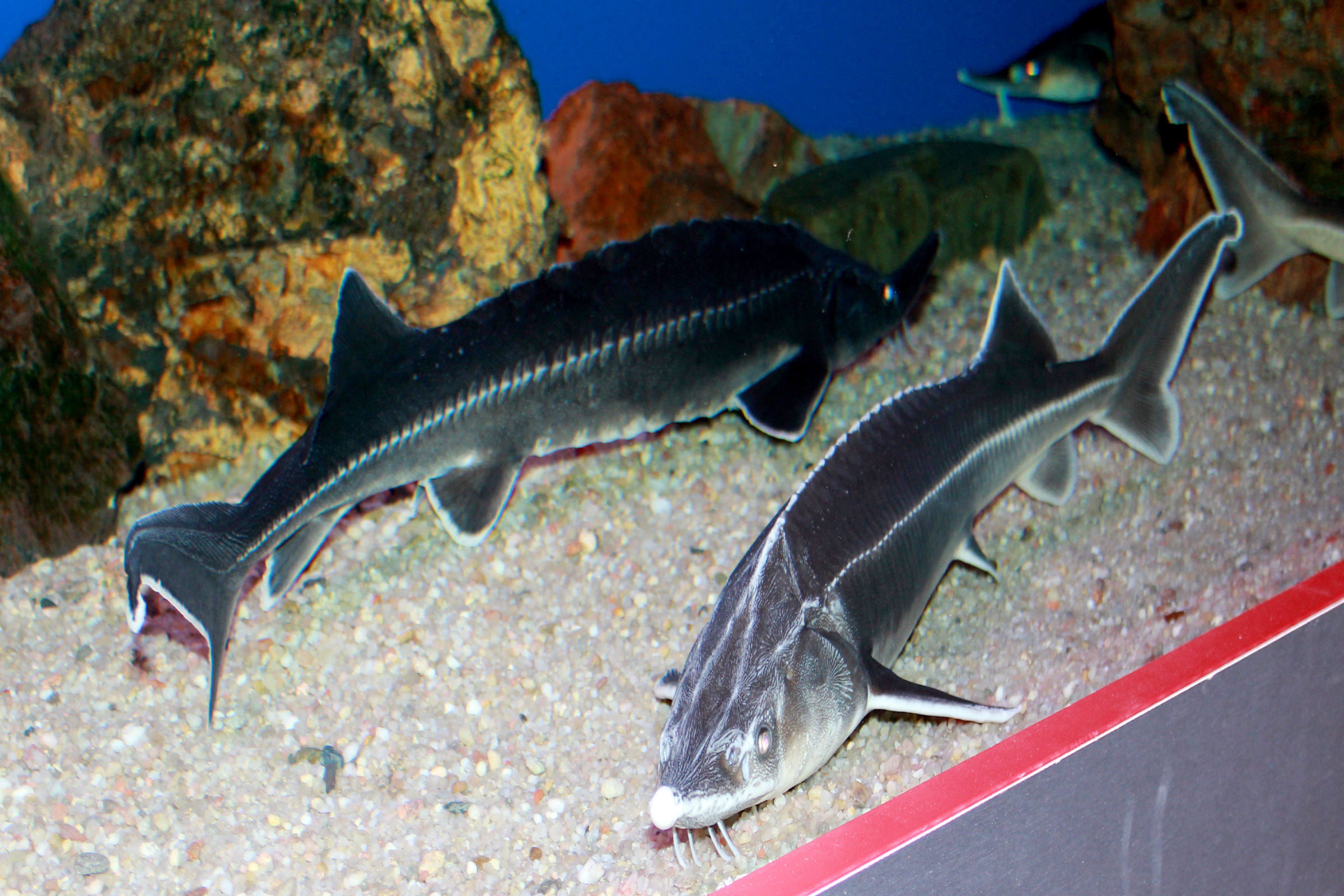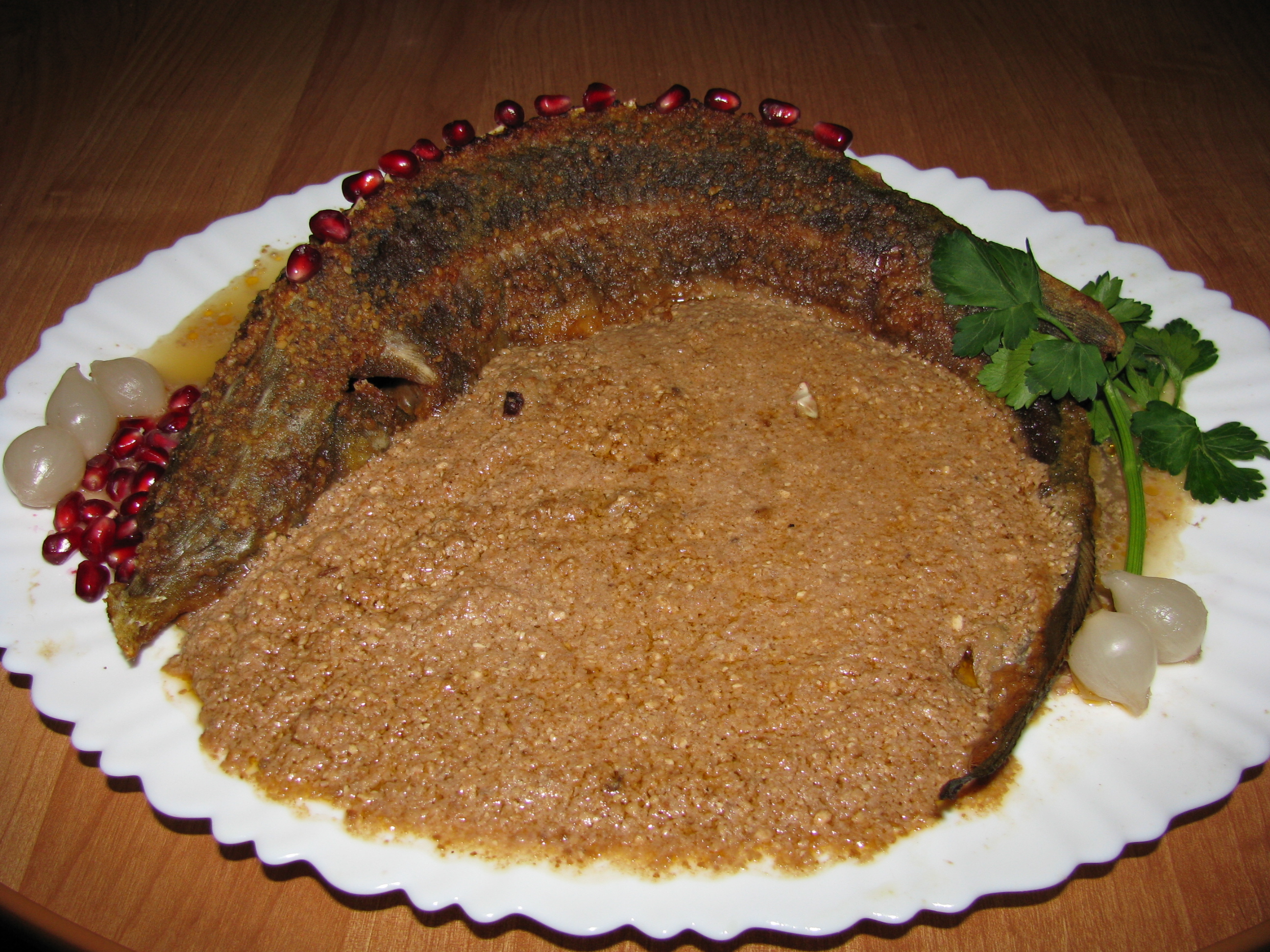Acipenser ruthenus on:
[Wikipedia]
[Google]
[Amazon]
The sterlet (''Acipenser ruthenus'') is a relatively small species of sturgeon from

 The sterlet commonly reaches the age of 22 to 25 years. Males reach sexual maturity at 3–7 years old and females at 4–12 years old. Spawning occurs from the middle of April to the beginning of June. Females may lay from 15,000–44,000 eggs, at water temperatures preferably 12–17 °C (54–63 °F).
The sterlet commonly reaches the age of 22 to 25 years. Males reach sexual maturity at 3–7 years old and females at 4–12 years old. Spawning occurs from the middle of April to the beginning of June. Females may lay from 15,000–44,000 eggs, at water temperatures preferably 12–17 °C (54–63 °F).
 In Russia, it is held in high esteem on account of its excellent flesh, contributing also to the best kinds of caviar and isinglass.
In Russia, it is held in high esteem on account of its excellent flesh, contributing also to the best kinds of caviar and isinglass.
Eurasia
Eurasia (, ) is the largest continental area on Earth, comprising all of Europe and Asia. Primarily in the Northern and Eastern Hemispheres, it spans from the British Isles and the Iberian Peninsula in the west to the Japanese archipelago ...
native to large rivers that flow into the Black Sea
The Black Sea is a marginal mediterranean sea of the Atlantic Ocean lying between Europe and Asia, east of the Balkans, south of the East European Plain, west of the Caucasus, and north of Anatolia. It is bounded by Bulgaria, Georgia, Rom ...
, Azov Sea, and Caspian Sea
The Caspian Sea is the world's largest inland body of water, often described as the world's largest lake or a full-fledged sea. An endorheic basin, it lies between Europe and Asia; east of the Caucasus, west of the broad steppe of Central Asia ...
, as well as rivers in Siberia
Siberia ( ; rus, Сибирь, r=Sibir', p=sʲɪˈbʲirʲ, a=Ru-Сибирь.ogg) is an extensive region, geographical region, constituting all of North Asia, from the Ural Mountains in the west to the Pacific Ocean in the east. It has been a ...
as far east as Yenisei
The Yenisey (russian: Енисе́й, ''Yeniséy''; mn, Горлог мөрөн, ''Gorlog mörön''; Buryat: Горлог мүрэн, ''Gorlog müren''; Tuvan: Улуг-Хем, ''Uluğ-Hem''; Khakas: Ким суғ, ''Kim suğ''; Ket: Ӄук, ...
. Populations migrating between fresh and salt water ( anadromous) have been extirpated
Local extinction, also known as extirpation, refers to a species (or other taxon) of plant or animal that ceases to exist in a chosen geographic area of study, though it still exists elsewhere. Local extinctions are contrasted with global extinct ...
.Also known as Sterlet sturgeon.
Due to overfishing (for its flesh, caviar
Caviar (also known as caviare; from fa, خاویار, khâvyâr, egg-bearing) is a food consisting of salt-cured roe of the family Acipenseridae. Caviar is considered a delicacy and is eaten as a garnish or a spread. Traditionally, the te ...
, and isinglass), pollution, and dams, the sterlet has declined throughout its native range and is considered vulnerable by the IUCN. Restocking projects are ongoing, and it has been introduced to some regions outside its native range, but the latter have generally not become self-sustaining. Today, the majority of the international trade involves sterlets from aquaculture.
Physical appearance
*The sterlet may reach 16 kg in weight and 100 to 125 cm in length, rarely exceeding a length of 90 cm. *It is quite variable in coloration, but usually has a yellowishventral
Standard anatomical terms of location are used to unambiguously describe the anatomy of animals, including humans. The terms, typically derived from Latin or Greek roots, describe something in its standard anatomical position. This position prov ...
side.
*It is distinguishable from other European species of sturgeons by the presence of a great number of whitish lateral scutes
A scute or scutum (Latin: ''scutum''; plural: ''scuta'' " shield") is a bony external plate or scale overlaid with horn, as on the shell of a turtle, the skin of crocodilians, and the feet of birds. The term is also used to describe the anterio ...
, fringed barbel Barbel may refer to:
*Barbel (anatomy), a whisker-like organ near the mouth found in some fish (notably catfish, loaches and cyprinids) and turtles
*Barbel (fish), a common name for certain species of fish
**''Barbus barbus'', a species of cyprinid ...
s, and an elongated and narrow snout, highly variable in length.
Feeding habits
The sterlet's main source of food is benthic organisms; they commonly feed oncrustaceans
Crustaceans (Crustacea, ) form a large, diverse arthropod taxon which includes such animals as decapods, seed shrimp, branchiopods, fish lice, krill, remipedes, isopods, barnacles, copepods, amphipods and mantis shrimp. The crustacean gro ...
, worm
Worms are many different distantly related bilateral animals that typically have a long cylindrical tube-like body, no limbs, and no eyes (though not always).
Worms vary in size from microscopic to over in length for marine polychaete wo ...
s, and insect larva
A larva (; plural larvae ) is a distinct juvenile form many animals undergo before metamorphosis into adults. Animals with indirect development such as insects, amphibians, or cnidarians typically have a larval phase of their life cycle.
...
e.

Life history
 The sterlet commonly reaches the age of 22 to 25 years. Males reach sexual maturity at 3–7 years old and females at 4–12 years old. Spawning occurs from the middle of April to the beginning of June. Females may lay from 15,000–44,000 eggs, at water temperatures preferably 12–17 °C (54–63 °F).
The sterlet commonly reaches the age of 22 to 25 years. Males reach sexual maturity at 3–7 years old and females at 4–12 years old. Spawning occurs from the middle of April to the beginning of June. Females may lay from 15,000–44,000 eggs, at water temperatures preferably 12–17 °C (54–63 °F).
As pond fish
Sterlets require relatively large ponds with good water conditions, and may get entangled in plants such as blanketweed. They may require special food such as sterlet sticks, as they are unable to digest the vegetable proteins usually found in commercial fish foods.As food
History in the Danube
The sterlet (''Acipenser ruthenus'' in Linnaeus' classification) is the last of the five native sturgeon species inhabiting the Middle and Upper Danube River. Its population has dropped significantly, mainly due to the degradation of main habitats, spawning grounds and foraging grounds.References
{{Authority control Freshwater fish of Europe Fish of Europe Fish of the Black Sea Fish of Central Asia Fish of Russia Fish described in 1758 Acipenser Taxa named by Carl Linnaeus